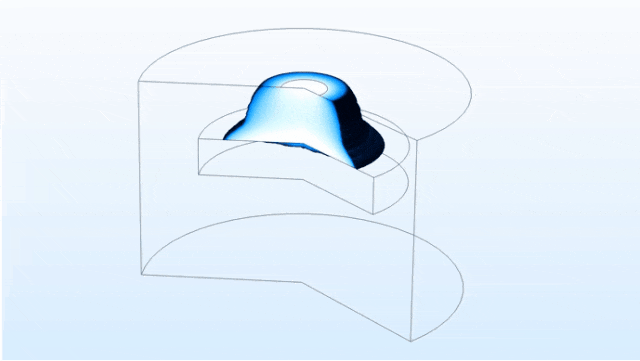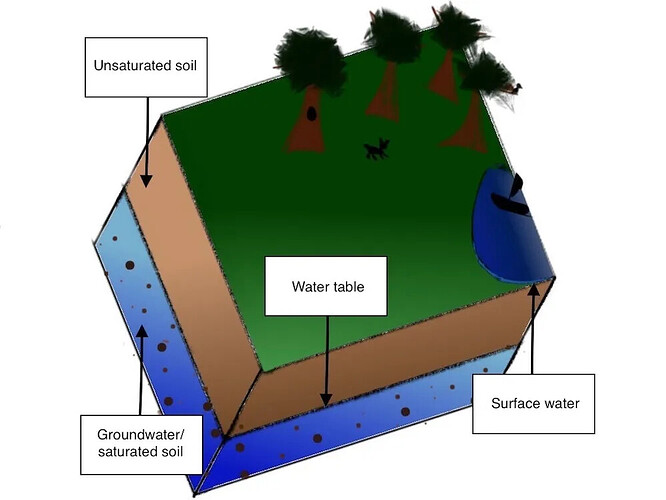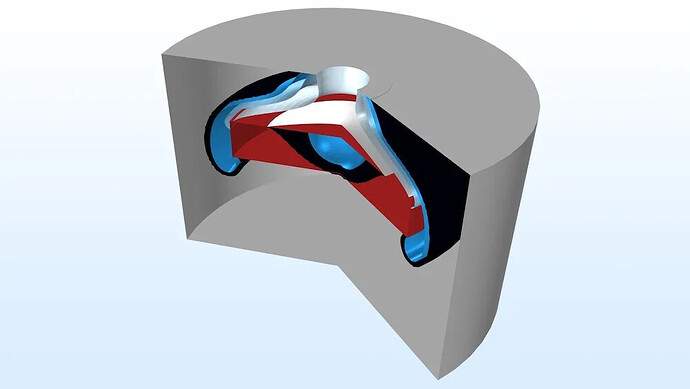Groundwater is a vital source of irrigation and drinking water, making its purity essential. However, once pollutants enter it, they are difficult to remove. Establishing a system to remove contaminants from groundwater requires understanding the complex behavior of immiscible fluids migrating through soil. Engineers can use the phase transfer functionality in COMSOL® software to simulate this behavior.
Predicting Groundwater Fluid Migration
Fluid, particularly immiscible fluids, migration in the underground is crucial for many industries. Researchers have studied this type of transfer to improve methods of oil extraction and recovery. Today, their focus has shifted towards the negative environmental impacts of immiscible fluids. Engineers in fields such as waste management and environmental protection are designing systems that can better prevent, detect, and clean up soil contaminants. If left uncontrolled, pollutants may enter groundwater, affecting crop quality.
However, understanding fluid flow is challenging due to the complexity of the processes and the nature of non-water phase liquids. The density of oils and other non-aqueous phase liquids is typically different from water, and even if mixed, they tend to flow separately (multiphase flow). Non-aqueous phase liquids can also become trapped in low-permeability soil regions, such as silt and clay, making them harder to detect and remove. Additionally, the way non-aqueous phase fluids flow through soil (and any low-permeability areas) depends on the soil’s saturation.
To gain deeper insight into fluid flow in soil, engineers can use numerical simulation techniques. In this article, we will explore a sample model of multiphase flow in porous media containing low-permeability crystals.
Simulating Multiphase Flow in Porous Media
The example model consists of a circular domain used to represent a porous medium with a low-permeability crystal in the center. Due to axial symmetry, we can create a 2D cross-sectional model, which reduces the computational cost of the simulation. First, a fluid lighter than non-aqueous phase liquids (such as water) fills the entire domain. After starting the simulation, the heavier non-aqueous phase liquid enters the domain through a small hole at the top with a constant and uniform mass flux, continuing for 100 minutes.
Here, we will not cover all simulation details, but you can refer to the “Read Original” link at the bottom for the tutorial model on two-phase flow above the low-permeability crystal, download the corresponding MPH files, and explore the properties of the fluids and soil.
Using the phase transfer functionality in the CFD Module and the Groundwater Flow Module in COMSOL Multiphysics®, we can easily simulate two-phase flow. The Porous Media Phase Transfer interface allows the analysis of how immiscible fluids flow through soil, determining saturation levels and accounting for microscopic phenomena at phase interfaces and the effects of gravity. Additionally, the functionality of this interface can be coupled with the Darcy’s Law interface via the multiphysics coupling node for porous media multiphase flow, making it easier to simulate the flow and transfer of multiphase fluids in porous media.
Although not used in this example, the phase transfer interface can also simulate free-flowing multiphase flow without tracking the interface between phases, which reduces computational requirements compared to other methods.
The simulation results show the two-phase flow around the low-permeability crystal. Initially, the heavier phase flows around the low-permeability region but does not penetrate it, as the capillary pressure at the crystal’s entrance is higher than the surrounding soil pressure. This means that only when the saturation level reaches a critical value will the denser non-wetting fluid enter the crystal. We can simulate this process using the Porous Media Discontinuity boundary condition, which allows for a discontinuous soil-crystal interface and helps determine the critical saturation point.
Visualization of Results

After running the simulation, we can observe that the flow of the heavier phase matches the expected results. The fluid does not immediately permeate the crystal but only enters when the surrounding soil reaches its critical saturation point, which occurs around the 12th minute. After about an hour, the heavier phase reaches the bottom of the crystal.
As shown in this example, engineers can use the phase transfer functionality in COMSOL Multiphysics® to analyze the transport of single-phase and multiphase fluids in porous media. By gaining a deeper understanding of the physical processes involved, they can design more efficient systems for removing groundwater contaminants, oil extraction, and more.

